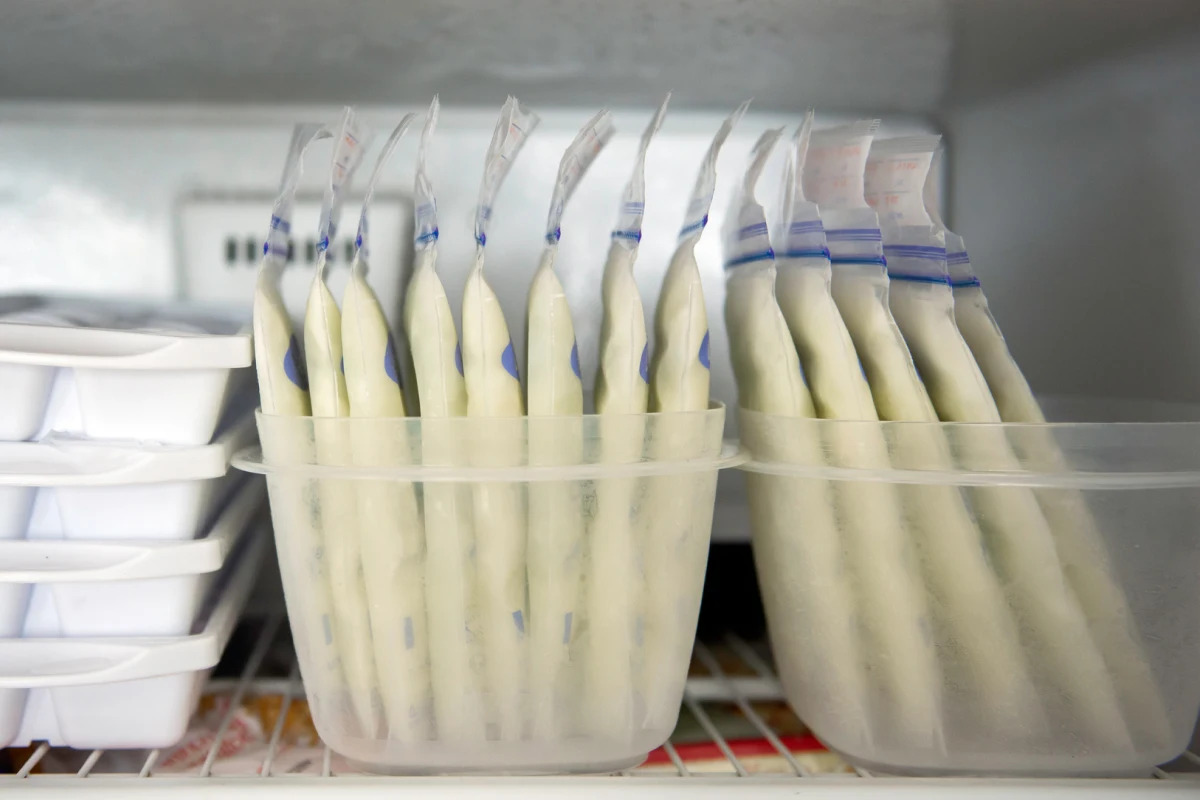

Articles
How To Store Breast Milk At Home
Modified: October 20, 2024
Discover the best practices for storing breast milk at home with our informative articles. Learn how to maintain its nutritional value and ensure the safety of your baby.
(Many of the links in this article redirect to a specific reviewed product. Your purchase of these products through affiliate links helps to generate commission for Storables.com, at no extra cost. Learn more)
Introduction
Welcome to the world of motherhood, where every decision is made with utmost care and consideration. As a nursing mother, you understand the importance of breast milk for the optimal growth and development of your little one. However, there may be times when you need to store breast milk at home.
Whether you’re returning to work, planning a night out, or simply want to build up a stash of breast milk for emergencies, having a reliable storage system is crucial. Storing breast milk properly ensures that your baby continues to receive the nourishment they need even when you’re not physically present.
In this article, we will guide you through the process of storing breast milk at home, providing valuable insights, tips, and guidelines to help you make informed decisions for the well-being of both you and your baby. So, let’s dive in!
Key Takeaways:
- Storing breast milk at home offers flexibility, bonding opportunities, and peace of mind for nursing mothers, ensuring that their baby receives nourishment even in their absence.
- Proper preparation, storage, and handling of breast milk are essential for maintaining its quality and safety, providing the best nutrition for the baby’s development and well-being.
Read more: How To Store And Freeze Breast Milk
Why Store Breast Milk at Home?
Storing breast milk at home offers numerous benefits for both you and your baby. Here are some reasons why you might consider storing breast milk:
- Flexibility: Storing breast milk allows you to have a supply on hand for times when you cannot directly breastfeed. This gives you the flexibility to go back to work, attend social events, or simply take a break while ensuring that your baby is still receiving the benefits of breast milk.
- Bonding: Storing breast milk allows other family members or caregivers to feed your baby, giving them the opportunity to bond with your little one. This can be particularly helpful if you are experiencing breastfeeding difficulties or want to involve your partner in the feeding process.
- Emergency situations: Having a stockpile of breast milk at home can be a lifesaver during unexpected situations such as illness, power outages, or unforeseen circumstances. It provides you with peace of mind knowing that your baby will have access to nourishment even in challenging times.
- Increasing milk supply: By storing breast milk, you can gradually build up a supply over time. This can be especially helpful if you are experiencing low milk supply or want to build a reserve for when your baby has increased feeding demands.
- Donor milk: Some mothers choose to share their breast milk with others in need. Storing breast milk allows you to participate in milk-sharing programs or donate to milk banks, helping infants who may not have access to their mother’s milk.
By storing breast milk at home, you can take advantage of these benefits and ensure that your baby continues to receive the many advantages of breast milk even in your absence. It provides convenience, peace of mind, and the opportunity for others to share in the joy of feeding and nurturing your little one.
Preparing for Storing Breast Milk
Before you start storing breast milk, there are a few key steps you should take to ensure that the process is safe and effective. Let’s explore how to properly prepare for storing breast milk:
- Wash your hands: Always wash your hands thoroughly with soap and water before handling breast milk. This helps to prevent any potential contamination.
- Choose the right storage containers: Use BPA-free containers specifically designed for storing breast milk. These can include bottles, breast milk storage bags, or even silicone storage cups. Make sure the containers are clean and sterile before use.
- Label the containers: Clearly label each container with the date and time of expressing the milk. This helps to keep track of freshness and ensure that you use the oldest milk first.
- Storage quantity: When storing breast milk, it is advisable to store it in small quantities, such as 2 to 4 ounces (about 60 to 120 milliliters). This allows for easier thawing and minimizes wastage.
- Cool down freshly expressed milk: After expressing breast milk, allow it to cool down at room temperature for a short period before storing it in the refrigerator or freezer. This helps to preserve the freshness of the milk.
- Understand storage guidelines: Familiarize yourself with the guidelines for storing breast milk based on the method of storage (refrigerator or freezer) and the anticipated time of usage. This ensures that the milk remains safe for your baby to consume.
- Clean and sanitize breast pump parts: After each use, ensure that all breast pump parts that come into contact with breast milk are thoroughly cleaned and sanitized. This helps to maintain the hygiene and quality of the expressed milk.
- Freeze if not consumed within 24 hours: If you are not planning to use the expressed breast milk within 24 hours, it is recommended to store it in the freezer. This helps to preserve the nutrients and quality of the milk for a longer period.
- Keep track of storage time: Be mindful of the storage time limits for breast milk. Use the oldest milk first, and if a container has been partially used, discard any remaining milk that has not been consumed within two hours of feeding.
By following these preparatory steps, you can ensure that your breast milk storage process is efficient, safe, and maintains the nutritional integrity of the milk for your little one. Remember, proper preparation is the key to successful breast milk storage.
Choosing the Right Storage Containers
When it comes to storing breast milk, choosing the right storage containers is essential for preserving the quality and freshness of the milk. Here are some factors to consider when selecting the ideal containers:
- BPA-free: Opt for storage containers that are labeled as BPA-free. Bisphenol A (BPA) is a chemical commonly found in certain plastics that may leach into the milk and can be harmful to your baby’s health.
- Bottle or storage bags: There are two primary options for storing breast milk: bottles or storage bags. Both options have their advantages. Bottles are reusable, easy to clean, and allow for easy feeding. Storage bags, on the other hand, are space-efficient, disposable, and great for long-term storage.
- Silicone storage cups: Silicone storage cups are becoming increasingly popular due to their versatility. These cups are durable, lightweight, and can be used for both storage and feeding. They are also freezer-safe and easily stackable, optimizing storage space.
- Size and capacity: Consider the size and capacity of the storage containers. Smaller containers, typically 2 to 4 ounces (about 60 to 120 milliliters), are convenient for storing smaller amounts of breast milk. This helps to prevent wastage and allows for more flexibility in portioning.
- Sealable and leak-proof: Ensure that the storage containers have dependable seals or closures to prevent leaks and spills. This helps to maintain the quality of the milk and prevents contamination.
- Easy to label: Look for containers that have space for labeling. Properly labeling your storage containers with the date and time of expressing not only helps you keep track of freshness but also ensures that you use the oldest milk first.
- Compatibility with breast pumps: If you plan to pump your milk directly into storage containers, ensure that the containers are compatible with your breast pump. This facilitates a seamless transition from pumping to storage without the need for transferring milk multiple times.
Remember, whichever storage container you choose, always clean and sterilize it before use. Follow the manufacturer’s instructions for cleaning and sanitizing to ensure proper hygiene. Additionally, consider factors such as convenience, ease of use, and personal preferences when selecting the right storage containers for your breastfeeding journey.
Steps to Store Breast Milk
Storing breast milk properly is crucial to maintain its quality and ensure the safety of your baby. Follow these steps to store breast milk effectively:
- Wash your hands: Start by washing your hands thoroughly with soap and water.
- Clean the storage container: Ensure that the storage container, whether it’s a bottle, storage bag, or silicone storage cup, is clean and sterilized.
- Express the milk: Using a breast pump or by hand, express the milk into the storage container. Leave some space at the top of the container to allow for expansion when freezing.
- Label the container: Clearly label the container with the date and time of expressing the milk. This helps you keep track of freshness and ensure that you use the oldest milk first.
- Cool down the milk: If you plan to store the milk in the refrigerator, let it cool down at room temperature for about 30 minutes before placing it in the refrigerator. If you plan to freeze the milk, allow it to cool down first before transferring it to the freezer.
- Store in the refrigerator or freezer: Place the storage container in the refrigerator or freezer, depending on when you plan to use the milk. If you’re storing it for immediate use (within 24 hours), place it in the refrigerator. For longer storage (up to 6 months), store it in the freezer.
- Arrange the storage containers: Arrange the storage containers in an organized manner, with the oldest milk in front and the newest in the back. This helps you use the milk in a “first in, first out” manner.
- Cover or seal the container: Ensure that the storage container is covered or sealed tightly to prevent leaks, spills, or contamination.
- Keep the milk away from the door: When storing breast milk in the refrigerator, place it on a shelf toward the back, away from the door. This helps to maintain a consistent temperature and prevent fluctuations that can affect the quality of the milk.
- Keep the freezer temperature consistent: If storing breast milk in the freezer, make sure the temperature is consistently set at or below 0°F (-18°C) to ensure optimal preservation.
Following these steps will help you store breast milk effectively, whether in the refrigerator or freezer. Remember to always handle the milk with clean hands, keep track of storage time, and practice proper hygiene to ensure the safety and quality of the milk for your little one.
Store breast milk in clean, BPA-free containers with tight-fitting lids. Label with date and use oldest milk first. Store in the back of the fridge or in the freezer for longer storage.
Read more: How To Store Pumped Breast Milk
Guidelines for Safe Breast Milk Storage
Proper storage of breast milk is essential to maintain its nutritional value and ensure its safety for your baby. Follow these guidelines to ensure safe breast milk storage:
- Refrigerator storage: If you plan to use the breast milk within 24 hours, store it in the refrigerator at a temperature between 32°F (0°C) and 39°F (4°C). Place the milk toward the back of the refrigerator, away from the door, to maintain a consistent temperature.
- Freezer storage: If you won’t be using the milk within 24 hours, store it in the freezer. The recommended temperature for freezer storage is 0°F (-18°C) or below. Keep in mind that long-term storage in the freezer may affect the taste, smell, and appearance of the milk, but it is still safe to consume.
- Hygienic storage containers: Always use clean, BPA-free storage containers designed specifically for storing breast milk. Make sure to properly clean and sterilize the containers before each use.
- Small storage quantities: Store breast milk in small quantities, such as 2 to 4 ounces (about 60 to 120 milliliters), to avoid wastage. This also allows for easier thawing and minimizes the risk of contaminating unused milk.
- No mixing fresh and refrigerated milk: Avoid mixing freshly expressed milk with already refrigerated milk. Instead, cool the freshly expressed milk to room temperature before combining it with previously refrigerated milk.
- Avoid refreezing thawed milk: Once you have thawed breast milk, do not refreeze it. Thawed breast milk should be used within 24 hours or discarded if not consumed within that time frame.
- Thaw slowly: When thawing frozen breast milk, do it slowly. Place the frozen container in the refrigerator overnight or run it under cool water. Avoid using hot water or microwaving the milk as excessive heat can destroy its beneficial properties.
- Check for spoilage: Before feeding your baby with stored breast milk, check for signs of spoilage such as a strange odor, unusual color changes, or clumps. If you notice any of these signs, discard the milk.
- Use the oldest milk first: Practice a “first in, first out” approach when using stored breast milk. This means using the oldest milk before the newer batches to ensure that none of the milk goes past its recommended storage time.
- Follow your baby’s cues: It’s important to remember that guidelines for safe breast milk storage are general recommendations. Your baby may have specific preferences or needs, so trust your instincts and observe your baby’s reactions to ensure they’re consuming safe and fresh milk.
By following these guidelines, you can ensure that your baby receives safe and nutritious breast milk, maintaining their health and well-being.
Thawing and Heating Stored Breast Milk
When it’s time to use the stored breast milk, proper thawing and heating techniques are crucial to maintain its quality and ensure your baby’s safety. Here are the steps to follow:
- Thawing breast milk:
- If the breast milk is frozen, transfer the desired amount from the freezer to the refrigerator a day before you plan to use it. Allow it to thaw slowly in the refrigerator.
- Alternatively, you can thaw the frozen breast milk by placing the container in a bowl of warm water. Avoid using hot water or microwaving the milk as it can destroy the beneficial properties of the milk and create hot spots that can burn your baby’s mouth.
- Gently swirl the container to mix the separated fat layers in the breast milk once it is thawed.
- Heating breast milk:
- To heat freshly thawed or refrigerated breast milk, place the container in a bowl of warm water or use a bottle warmer. Avoid using direct heat sources like stovetops or microwaves, as they can create hot spots and destroy the nutrients in the milk.
- Swirl the container gently to ensure even heating and test the temperature of the milk on the inside of your wrist before feeding it to your baby. The milk should be warm, not hot.
- Do not reheat:
- Avoid reheating breast milk multiple times. Once the milk has been heated and partially consumed, any leftover milk should be discarded to reduce the risk of bacterial growth.
It’s important to note that thawed breast milk may appear different in color or have a separated appearance. This is normal, and gently swirling the container will remix the milk. Remember to always smell the milk before feeding it to your baby. If it has an off odor or abnormal color, discard the milk as it may be spoiled.
Using proper thawing and heating techniques ensures the safety and quality of the breast milk, providing your baby with the valuable nutrients they need for their development and well-being.
Tips for Efficient Breast Milk Storage
Efficient breast milk storage is essential to maximize the usage of your stored milk and ensure its freshness. Here are some tips to help you optimize your breast milk storage experience:
- Use breast milk storage bags: Consider using breast milk storage bags instead of bottles to save space in your freezer and allow for easy stacking and organization.
- Freeze milk in small portions: Freeze breast milk in small portions, such as 2 to 4 ounces (about 60 to 120 milliliters), to minimize wastage. This allows you to thaw only what you need for each feeding.
- Store milk in small quantities: Consider storing breast milk in smaller containers to minimize the amount of milk that goes to waste if your baby doesn’t finish a bottle. This also helps with portion control and allows for more flexibility when feeding.
- Organize the storage containers: Arrange your storage containers in a systematic manner, with the oldest milk in front and the newest in the back. This ensures that you use the oldest milk first, practicing a “first in, first out” approach.
- Create a labeling system: Develop a labeling system to easily identify the date and time of expressing the milk on each container. This helps track freshness and ensures that you always use the oldest milk first. Consider using different colored markers or labels for different days of the week.
- Keep track of storage time: Be mindful of the recommended storage times for breast milk. Regularly check the expiration dates and discard any milk that has exceeded the recommended storage duration to prioritize the freshness and safety of the given milk.
- Utilize storage trays or bins: Use storage trays or bins to keep storage containers organized in the refrigerator or freezer. This allows for easier access and helps prevent any spillage or leaks.
- Stock rotation: Periodically check the inventory of stored breast milk and rotate the stock to ensure you are using the oldest milk first. This helps maintain a consistent supply and reduces the likelihood of milk going to waste.
- Consider a separate freezer for breast milk: If you have enough space and are storing a significant volume of breast milk, you may want to consider dedicating a separate freezer for breast milk storage. This allows for better organization and prevents interference with other frozen items.
- Keep a pumping log: Maintain a record of the quantity and date of expressed breast milk to keep track of your milk storage inventory. This can help plan your feeding schedule and ensure proper rotation of the stored milk.
By implementing these tips, you can efficiently store, organize, and utilize your breast milk supply, ensuring that your baby has access to the freshest and highest-quality milk at all times.
Frequently Asked Questions
Here are some commonly asked questions about storing breast milk:
- How long can breast milk be stored in the refrigerator?
- How long can breast milk be stored in the freezer?
- Can I mix breast milk from different pumping sessions or different days?
- Can I add freshly expressed milk to already refrigerated or frozen milk?
- Can I refreeze breast milk that has been thawed?
- How can I thaw breast milk quickly in case of an emergency?
- Can I warm breast milk in the microwave?
- How can I tell if stored breast milk has gone bad?
- Is it safe to use breast milk that has been frozen for a long time?
- Can I combine breast milk from different days when preparing a bottle?
Properly stored breast milk can be kept in the refrigerator for up to 4-6 days. However, it’s best to use the milk within 3 days to ensure its freshness and safety.
When stored in a deep freezer, breast milk can be kept for 6-12 months. In a standard freezer compartment inside a refrigerator, it is recommended to use the milk within 6 months.
Yes, you can mix breast milk from different pumping sessions or different days. However, make sure the milk is chilled to the same temperature before combining, and always use the earliest expressed milk first.
It is generally safe to add freshly expressed milk to already refrigerated or frozen milk, as long as both have been stored properly and the temperature difference is not too significant. However, it’s best to cool the freshly expressed milk in the refrigerator before combining it with cold milk.
No, it is not recommended to refreeze breast milk that has been thawed. Once breast milk is thawed, it should be used within 24 hours, and any leftovers should be discarded.
If you need to thaw breast milk quickly in case of an emergency, you can place the storage container in a bowl of warm water. Avoid using hot water or microwaving the milk as it can destroy the beneficial properties of the milk and create hot spots.
No, it is not recommended to warm breast milk in the microwave. Microwaves heat milk unevenly, creating hot spots that can scald your baby’s mouth. It can also destroy the nutrients in the milk.
You can check for signs of spoilage in stored breast milk. If the milk has an off odor, unusual color changes, or clumps, it is best to discard it as it may be spoiled.
Frozen breast milk is safe to use even if it has been stored for a long time. However, the taste, smell, and appearance of the milk may change over time. It is still safe to consume as long as it has been stored properly and shows no signs of spoilage.
Yes, you can combine breast milk from different days when preparing a bottle. However, always use the oldest milk first and make sure that all the milk you are combining has been stored properly and hasn’t expired.
If you have any further questions or concerns about storing breast milk, it’s always best to consult with a healthcare professional or a lactation consultant for personalized advice.
Read more: How To Store Expired Breast Milk
Conclusion
Storing breast milk at home can provide convenience, flexibility, and peace of mind for nursing mothers. By following the proper guidelines, you can maintain the quality of breast milk and ensure it remains safe for your baby to consume.
In this article, we covered various aspects of storing breast milk, including the importance of storing breast milk at home, preparation methods, choosing the right storage containers, step-by-step storing instructions, guidelines for safe storage, thawing and heating techniques, tips for efficient storage, and answers to frequently asked questions.
Remember, proper hygiene, cleanliness, and labeling are crucial when storing breast milk. Always wash your hands before handling breast milk and ensure that the storage containers are clean, BPA-free, and properly labeled with the date and time of expressing the milk. Familiarize yourself with the recommended storage times for both the refrigerator and freezer to ensure that the milk remains fresh and safe.
Efficient breast milk storage involves making informed choices, such as using appropriate storage containers, organizing the storage space, and following proper stock rotation. By implementing these practices, you can optimize your breast milk storage and ensure that your baby receives the best possible nutrition.
At the end of the day, the well-being of your baby is paramount. If you have any concerns or additional questions about storing breast milk, it’s always advisable to seek guidance from your healthcare provider or a lactation consultant for personalized advice.
With the knowledge gained from this article, you are now equipped to store breast milk confidently and provide your baby with the nourishment they need even when you’re not physically present.
Frequently Asked Questions about How To Store Breast Milk At Home
Was this page helpful?
At Storables.com, we guarantee accurate and reliable information. Our content, validated by Expert Board Contributors, is crafted following stringent Editorial Policies. We're committed to providing you with well-researched, expert-backed insights for all your informational needs.
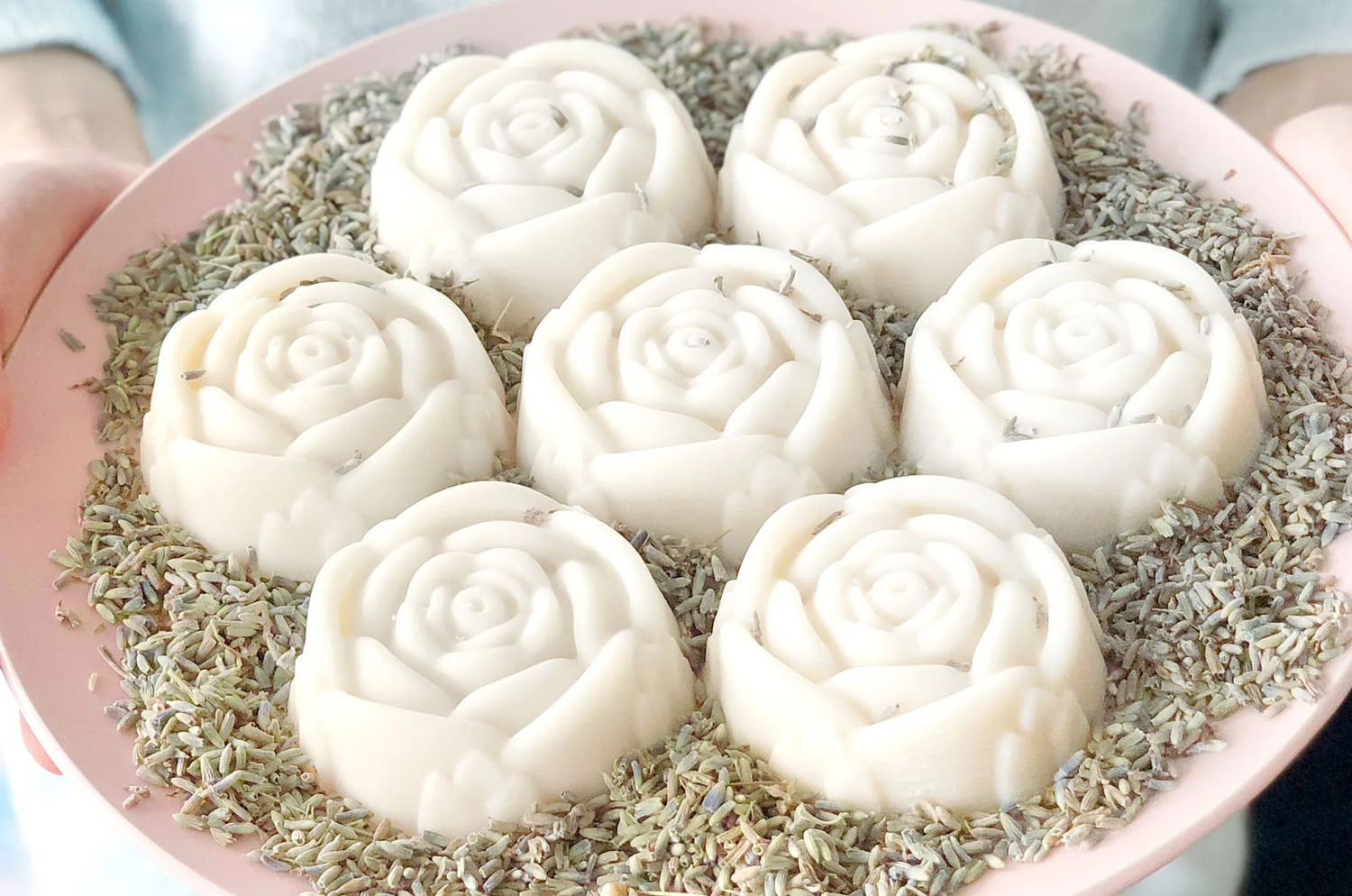
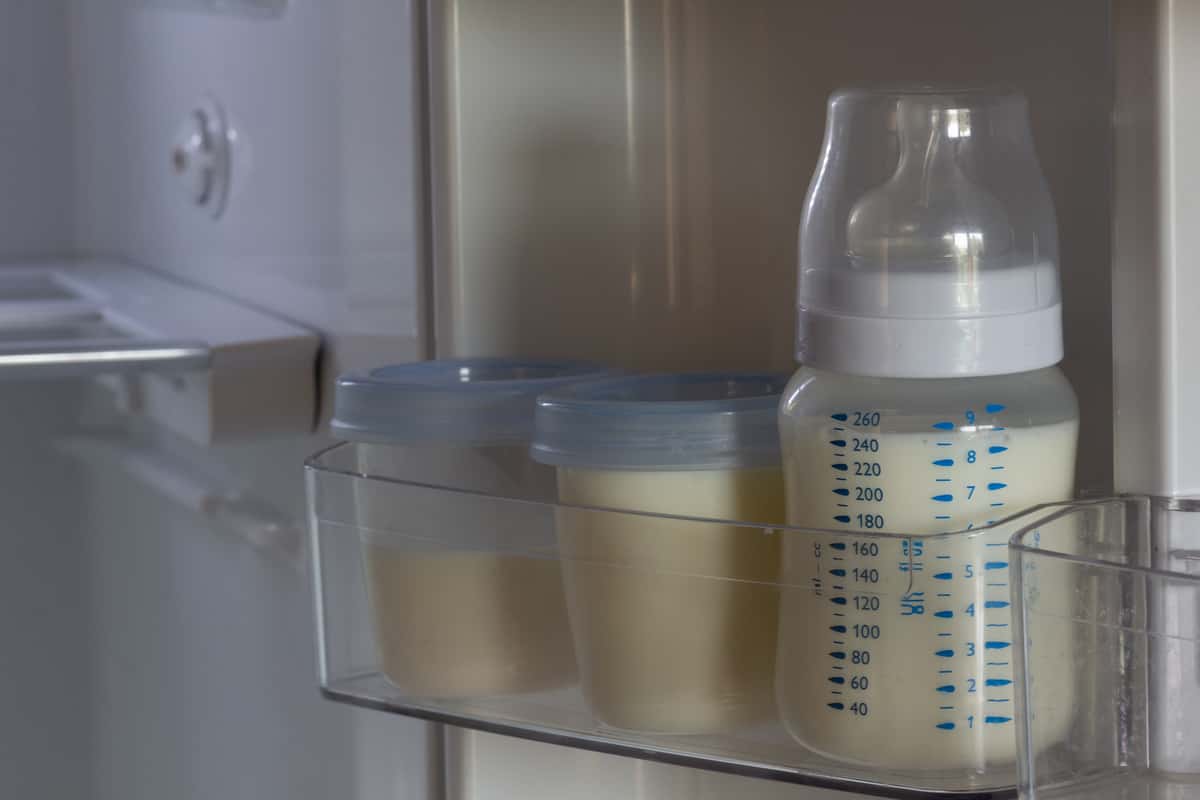
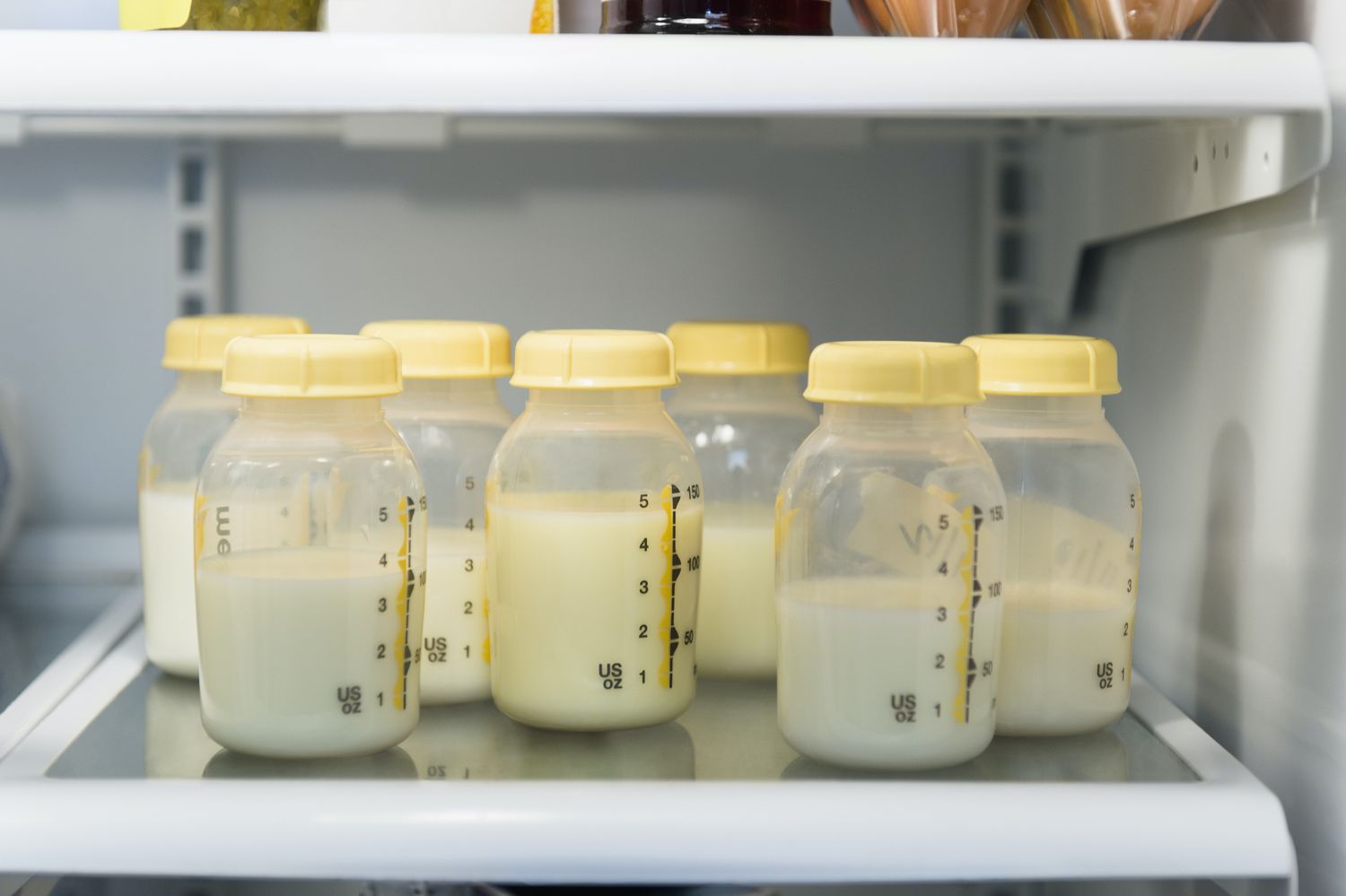
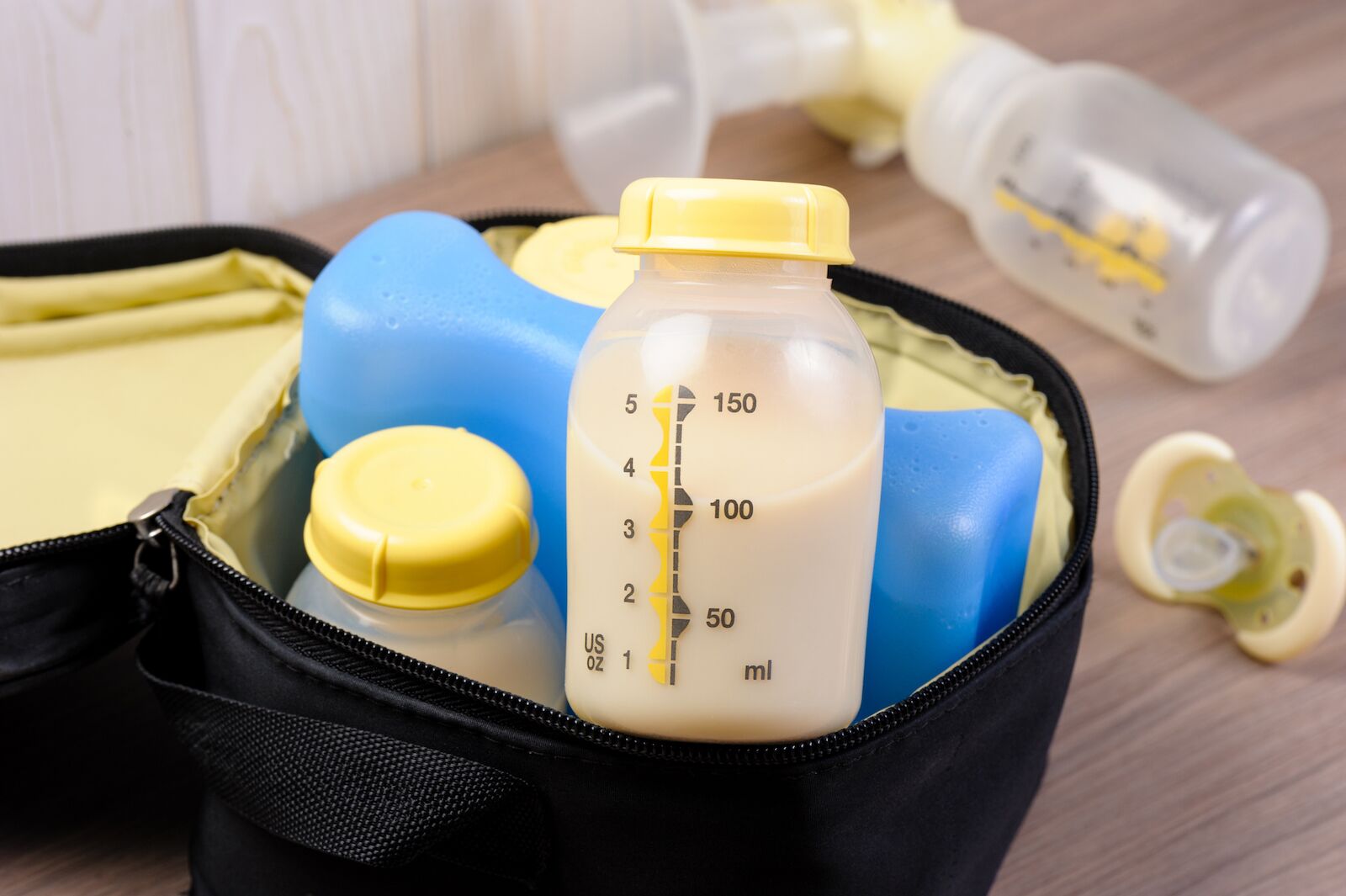
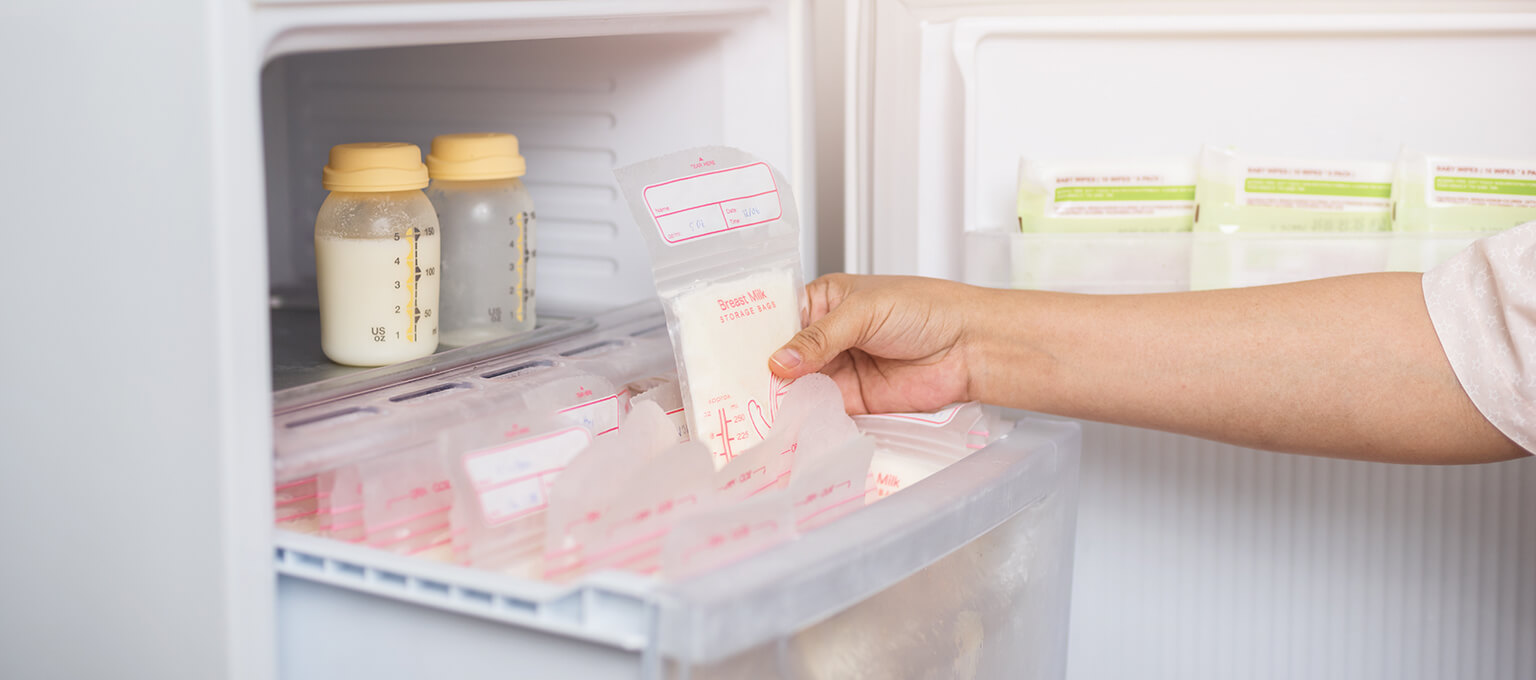
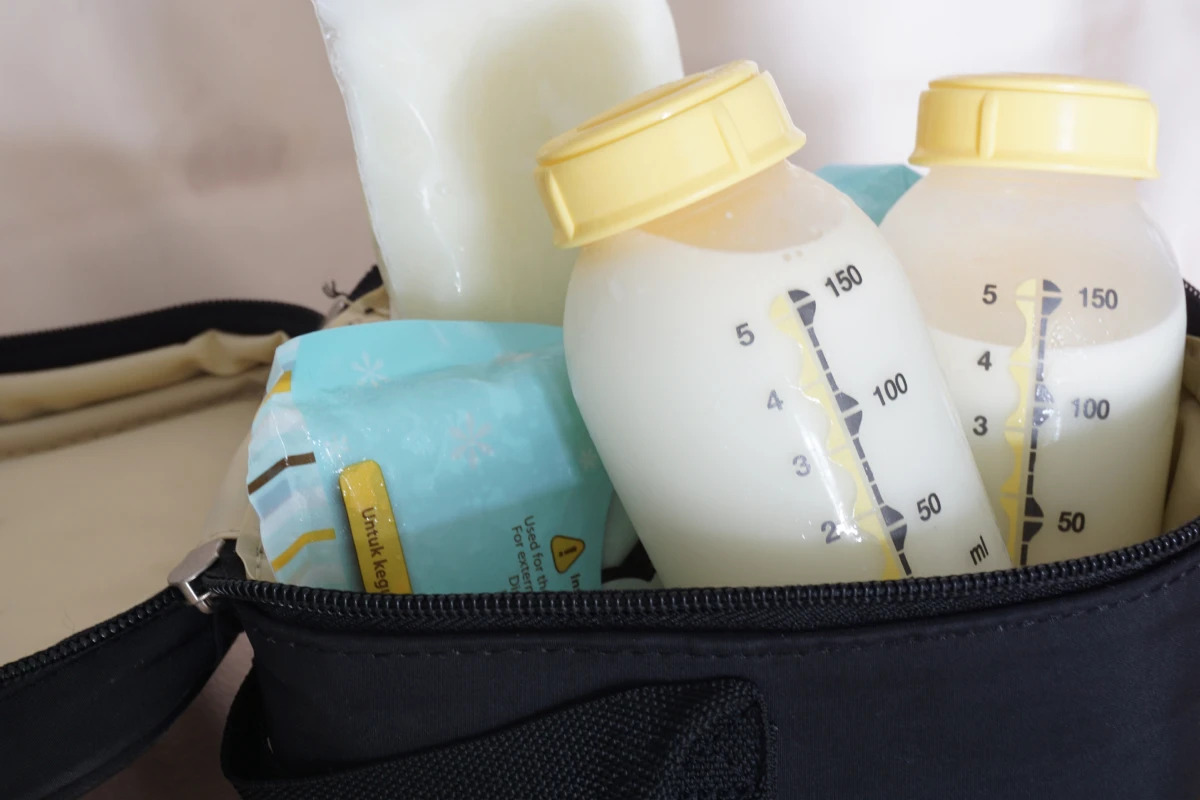

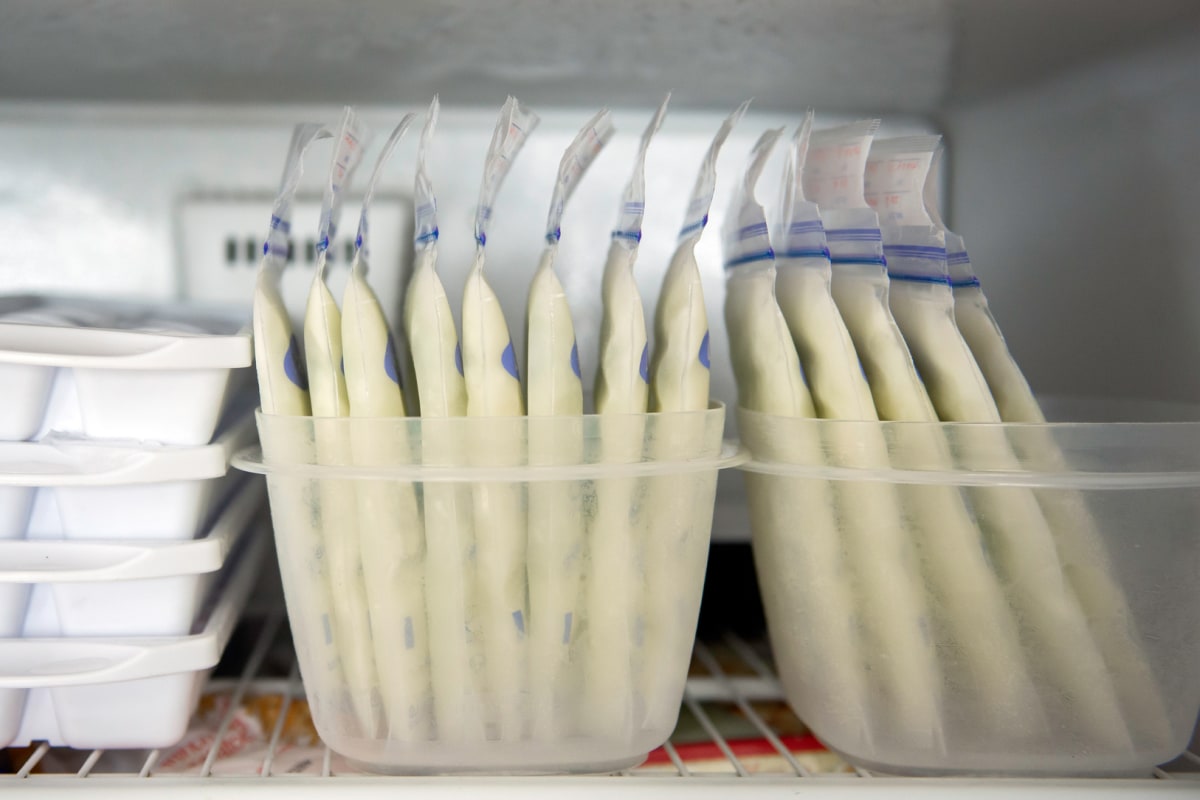
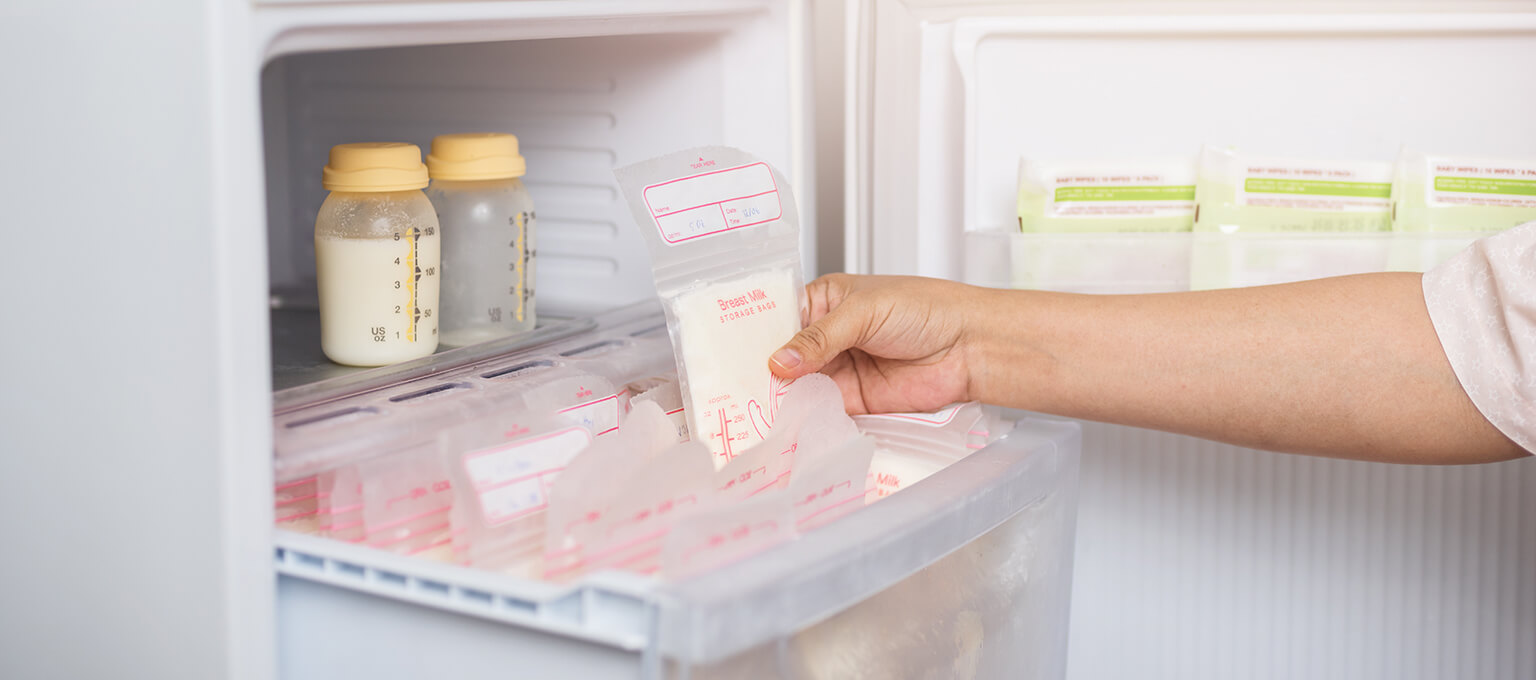

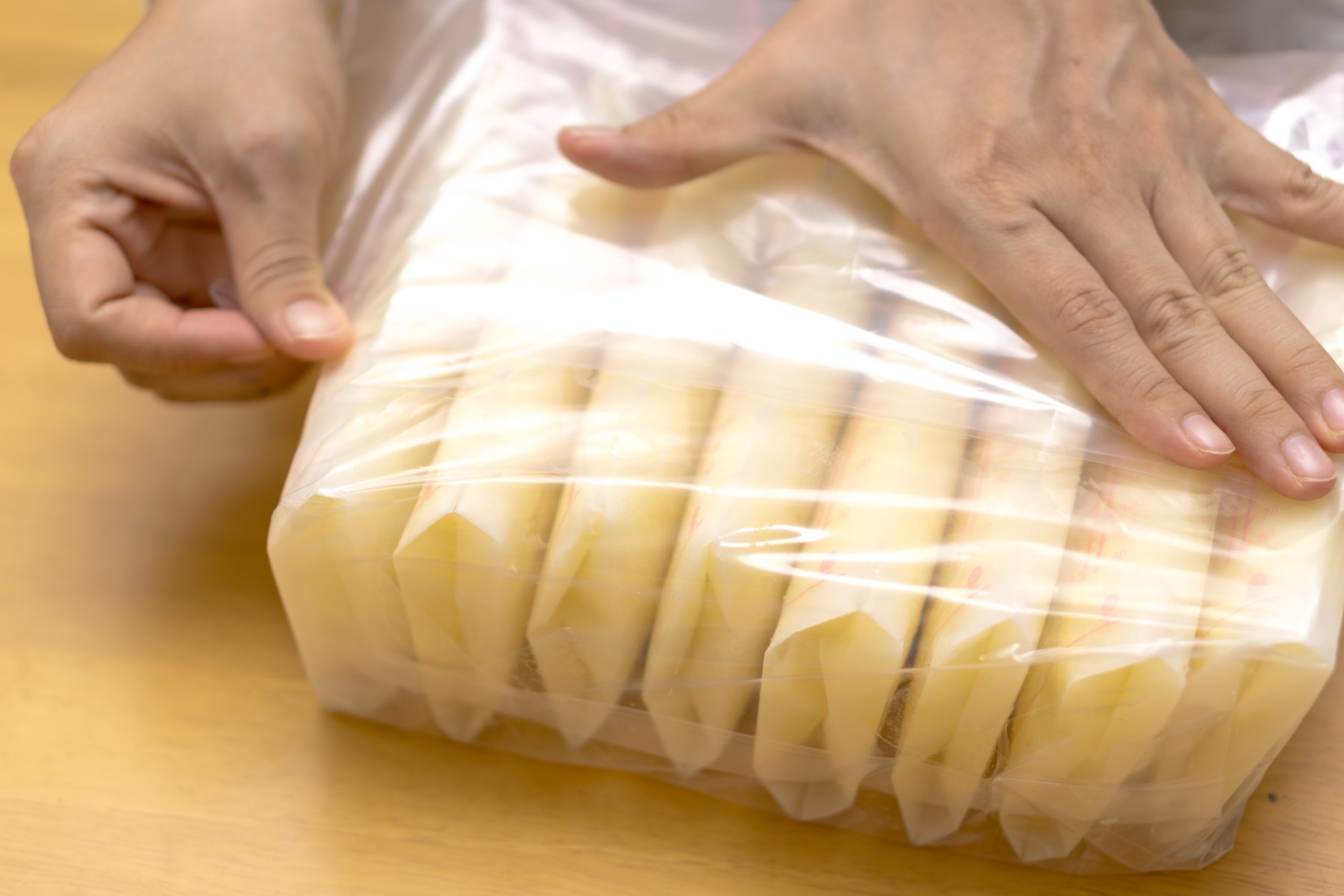
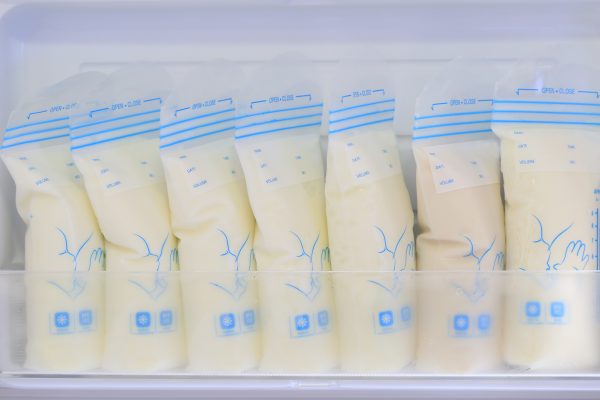
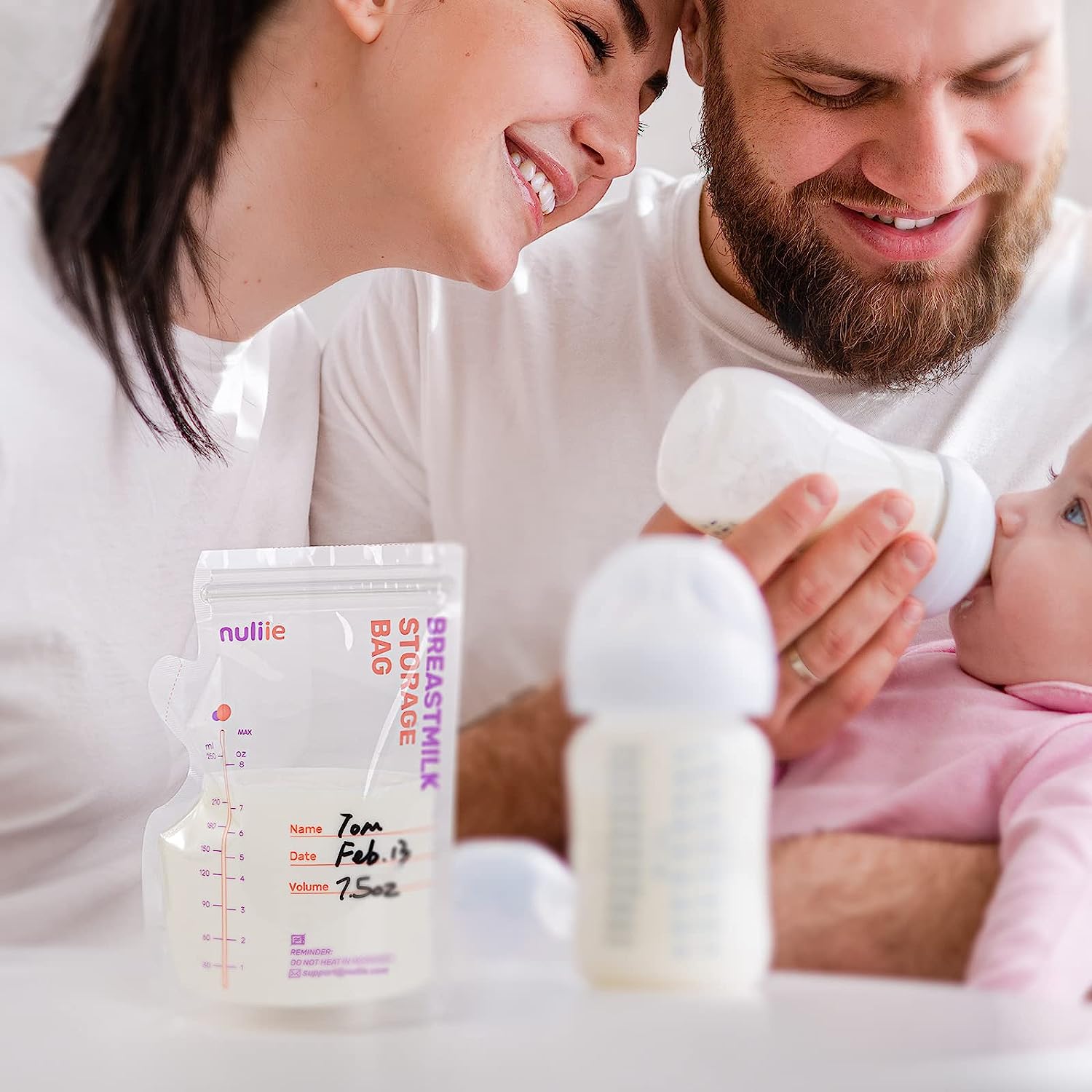

0 thoughts on “How To Store Breast Milk At Home”